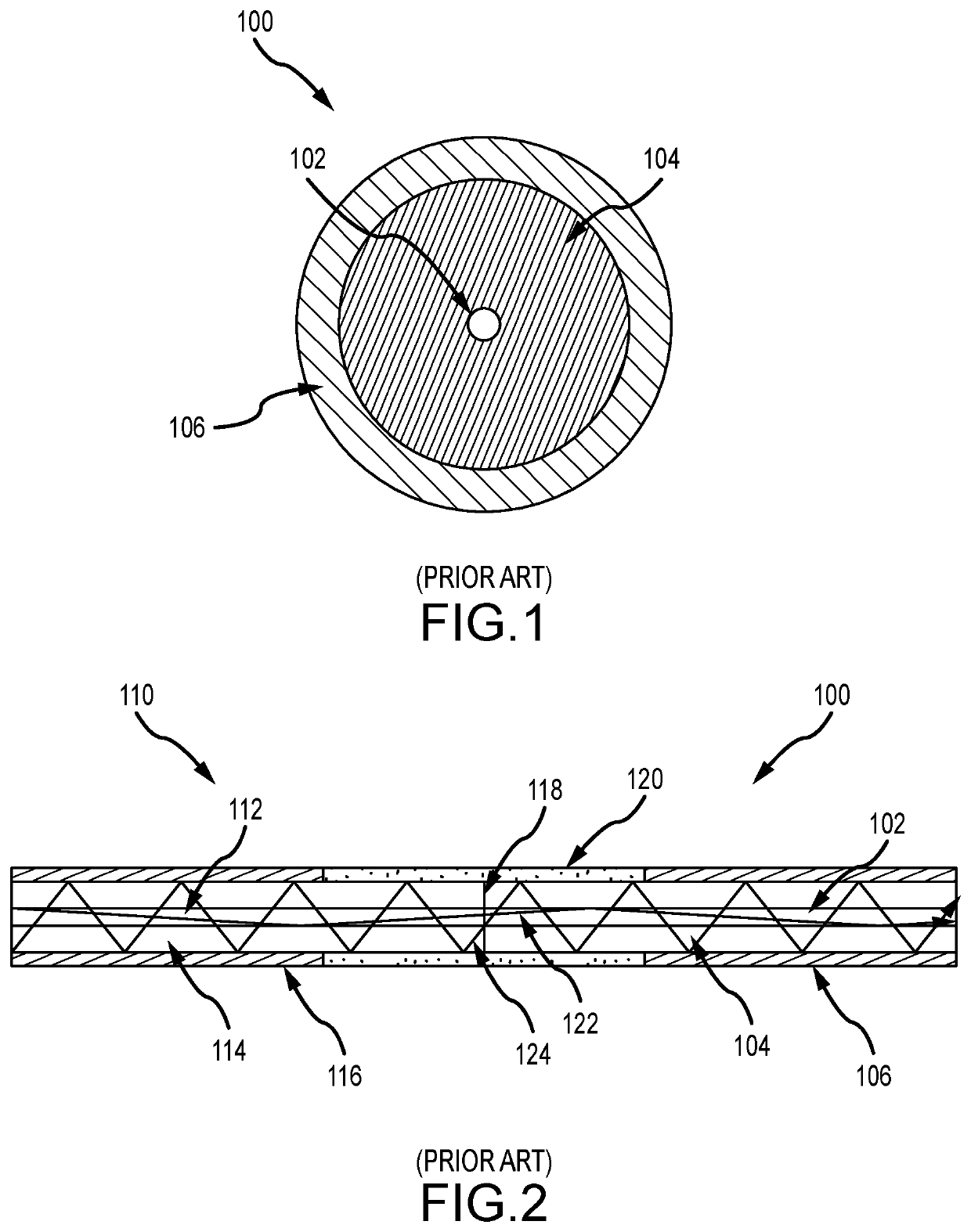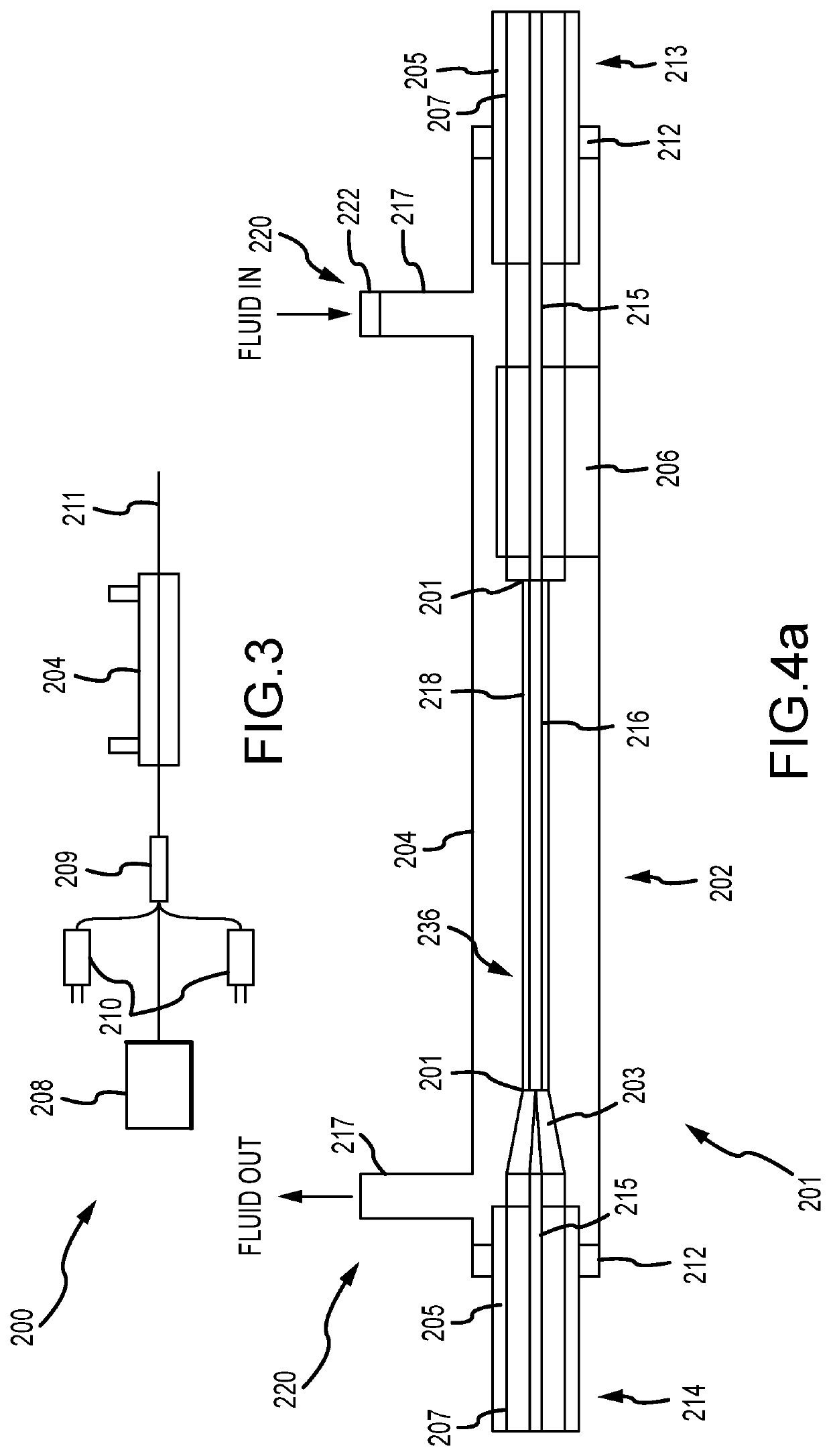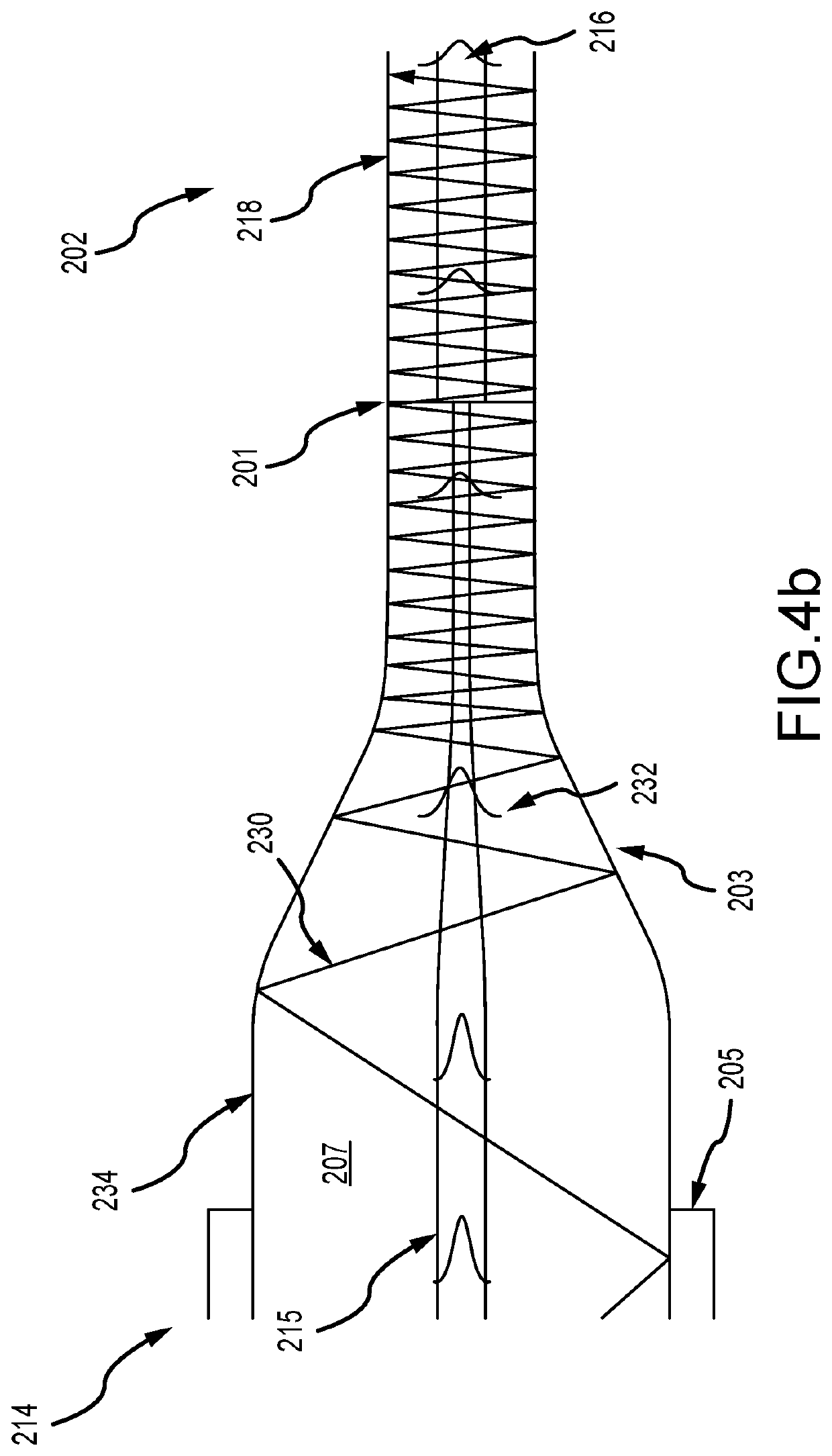Bare single mode fiber amplifier/laser
a single-mode fiber amplifier and amplifier technology, applied in the field of optical fiber amplification systems, can solve the problems of single-mode core diameter, single-mode core diameter, signal output plateau, etc., and achieve the effect of reducing the diameter of the 1st glass cladding of the bare fiber, efficient coupling of light, and increasing the core-cladding ratio
- Summary
- Abstract
- Description
- Claims
- Application Information
AI Technical Summary
Benefits of technology
Problems solved by technology
Method used
Image
Examples
Embodiment Construction
The present invention provides a gain fiber assembly for use in optical fiber amplification systems such as fiber amplifiers and fiber lasers. The assembly utilizes an active or “bare” fiber that has a single cladding layer with an outer diameter of less is less than 80 μm and preferably less than 60 μm. A passive double-clad input fiber is stripped of the outer cladding and tapered to match the outer diameter of the bare fiber. A glass-fluid or glass-vacuum interface along the taper provides guidance of the pump into the cladding of the bare fiber. The NA of the gain fiber is at least 0.8 for liquids and 1.0 for gasses or vacuum. The gain fiber assembly provides much higher pump conversion efficiencies, which allows for much shorter active fiber lengths to achieve equivalent levels of output power. As such, the length of fiber can be selected to maximize output power while avoiding the onset of non-linear effects or ASE.
[0037]Referring now to FIGS. 3 and 4a-4b, an embodiment of a f...
PUM
| Property | Measurement | Unit |
|---|---|---|
| diameter D4 | aaaaa | aaaaa |
| cladding diameter D4 | aaaaa | aaaaa |
| cladding diameter D4 | aaaaa | aaaaa |
Abstract
Description
Claims
Application Information
 Login to View More
Login to View More - R&D
- Intellectual Property
- Life Sciences
- Materials
- Tech Scout
- Unparalleled Data Quality
- Higher Quality Content
- 60% Fewer Hallucinations
Browse by: Latest US Patents, China's latest patents, Technical Efficacy Thesaurus, Application Domain, Technology Topic, Popular Technical Reports.
© 2025 PatSnap. All rights reserved.Legal|Privacy policy|Modern Slavery Act Transparency Statement|Sitemap|About US| Contact US: help@patsnap.com



